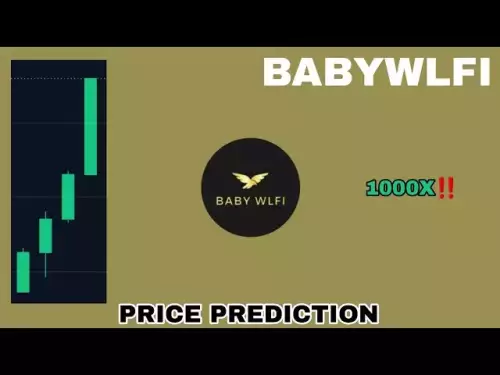-
 Bitcoin
Bitcoin $109000
0.19% -
 Ethereum
Ethereum $4469
2.66% -
 Tether USDt
Tether USDt $1.000
0.04% -
 XRP
XRP $2.804
-0.19% -
 BNB
BNB $865.3
0.76% -
 Solana
Solana $204.8
1.82% -
 USDC
USDC $1.000
0.04% -
 Dogecoin
Dogecoin $0.2177
1.15% -
 TRON
TRON $0.3426
1.20% -
 Cardano
Cardano $0.8234
0.49% -
 Chainlink
Chainlink $23.70
1.39% -
 Hyperliquid
Hyperliquid $44.93
2.16% -
 Ethena USDe
Ethena USDe $1.001
0.03% -
 Sui
Sui $3.299
0.30% -
 Stellar
Stellar $0.3562
-0.83% -
 Bitcoin Cash
Bitcoin Cash $543.6
0.28% -
 Avalanche
Avalanche $23.85
0.47% -
 Cronos
Cronos $0.2917
-6.10% -
 Hedera
Hedera $0.2233
-1.04% -
 UNUS SED LEO
UNUS SED LEO $9.605
1.14% -
 Litecoin
Litecoin $110.3
0.11% -
 Toncoin
Toncoin $3.170
1.43% -
 Shiba Inu
Shiba Inu $0.00001235
0.04% -
 Uniswap
Uniswap $9.775
0.89% -
 Polkadot
Polkadot $3.807
0.40% -
 Dai
Dai $0.9999
-0.01% -
 Bitget Token
Bitget Token $4.559
0.63% -
 Aave
Aave $322.2
1.83% -
 Monero
Monero $261.6
1.68% -
 Ethena
Ethena $0.6659
2.02%
Why is my Gemini withdrawal delayed?
Gemini withdrawal times vary due to network congestion, security reviews, and verification status—always confirm addresses and monitor blockchain activity.
Aug 31, 2025 at 03:18 pm
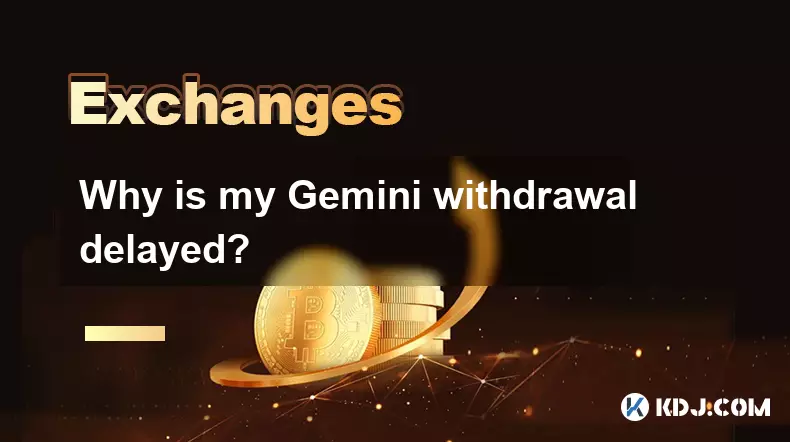
Understanding Withdrawal Processing Times on Gemini
1. Gemini processes withdrawals based on blockchain network activity and internal security protocols. During periods of high transaction volume, delays are common as the platform conducts additional verification steps to ensure fund safety. These checks are part of standard compliance procedures designed to prevent fraud and unauthorized transfers.
2. Each cryptocurrency operates on its own network, and confirmation times vary significantly. For example, Bitcoin transactions may take longer than stablecoin transfers on the Ethereum network due to differing block speeds and congestion levels. Users must account for these external network conditions when initiating withdrawals.
3. Scheduled maintenance or unexpected technical issues on Gemini’s platform can temporarily suspend withdrawal processing. These events are typically communicated through official status pages or email alerts. Monitoring these channels helps users stay informed about potential service interruptions.
4. Account verification status directly impacts withdrawal eligibility. Users who have not completed identity verification or triggered risk-based alerts may experience holds on their transactions. Completing KYC requirements and resolving any compliance flags reduces processing delays.
Security Reviews and Risk Assessment
1. All withdrawals undergo automated risk screening. Transactions flagged for unusual activity—such as large amounts or new destination addresses—enter manual review. This process ensures protection against account breaches but extends processing time.
2. Gemini employs anti-money laundering (AML) systems that analyze withdrawal patterns. If a transaction matches known risk indicators, it is paused for further investigation. Users may be required to submit additional documentation to verify the legitimacy of the transfer.
3. New accounts or those with infrequent activity are more likely to face extended reviews. The platform treats such cases with heightened scrutiny to prevent misuse. Establishing consistent usage history can reduce future delays.
4. Two-factor authentication (2FA) status and recent login locations influence risk scoring. Logging in from unfamiliar devices or regions may trigger temporary withdrawal restrictions until identity is re-verified.
Network Congestion and Blockchain Delays
1. Cryptocurrency networks like Bitcoin and Ethereum experience congestion during peak usage. High gas fees and full blocks slow down confirmation times, even if Gemini broadcasts the transaction promptly. Users should check network explorers to confirm if their transaction is pending on-chain.
2. Gemini sets default transaction fees based on current network conditions. If the fee is too low relative to demand, miners may deprioritize the transaction. Some users opt for expedited fees, though Gemini does not currently allow manual fee adjustments for withdrawals.
3. Token standards affect processing speed. ERC-20 tokens require Ethereum network confirmations, while BEP-20 tokens rely on Binance Smart Chain, which typically confirms faster. Understanding the underlying network helps set realistic expectations.
4. Occasional node synchronization issues on the receiving end can delay balance updates. Even after blockchain confirmation, some wallets take additional time to reflect incoming funds.
Address Validation and Transaction Errors
1. Sending funds to an invalid or incompatible address results in indefinite delays or permanent loss. Gemini may halt withdrawals if the destination format does not match the asset type—for example, sending ETH to a BTC address.
2. Copy-paste errors in wallet addresses are common. Users should always double-check characters before confirming. Some wallets support address validation tools that detect formatting issues before submission.
3. Withdrawals to exchange addresses require extra caution. Certain platforms restrict deposits from non-custodial wallets or require memo tags. Omitting required information leads to failed transactions.
4. Reusing outdated deposit addresses can cause issues. Exchanges often rotate addresses for security. Always retrieve the most current address from the recipient platform before initiating a transfer.
Frequently Asked Questions
What should I do if my withdrawal is stuck in pending status?Check the blockchain explorer using the transaction ID provided by Gemini. If the transaction is unconfirmed, network congestion is likely the cause. If no transaction ID exists, contact support to verify if the withdrawal is still under internal review.
Can Gemini cancel a withdrawal once initiated?No. Once a withdrawal is processed and broadcast to the blockchain, it cannot be canceled. Users must ensure accuracy before submission, as cryptocurrency transactions are irreversible.
How long does manual review typically take?Manual reviews generally take between 24 to 72 hours, though complex cases may extend beyond this window. Providing requested documents promptly helps expedite resolution.
Does enabling 2FA reduce withdrawal delays?While 2FA does not directly speed up processing, it strengthens account security and reduces the likelihood of being flagged by risk systems. Consistent use of 2FA contributes to smoother transaction approval over time.
Disclaimer:info@kdj.com
The information provided is not trading advice. kdj.com does not assume any responsibility for any investments made based on the information provided in this article. Cryptocurrencies are highly volatile and it is highly recommended that you invest with caution after thorough research!
If you believe that the content used on this website infringes your copyright, please contact us immediately (info@kdj.com) and we will delete it promptly.
- Memecoins September 2025 Watchlist: What's Hot Now?
- 2025-08-31 23:25:15
- Eric Trump Predicts Bitcoin to $1 Million: Hype or Reality?
- 2025-08-31 23:25:15
- BlockDAG: Redefining Scalability and ROI Potential in 2025
- 2025-08-31 23:05:16
- Ozak AI, Altcoins, and 20x Potential: Navigating the Crypto Landscape
- 2025-09-01 00:05:12
- Bonk Price, Solana Meme Coin, and the Rise of Layer Brett: A New Era?
- 2025-08-31 21:25:12
- ETH Transactions Soar, BTC Whale Shifts Gears: Decoding August's Crypto Charts
- 2025-08-31 21:05:16
Related knowledge
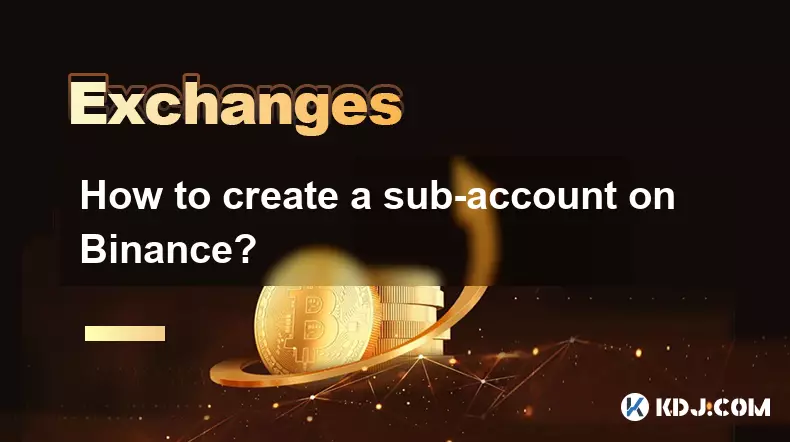
How to create a sub-account on Binance?
Sep 01,2025 at 12:36am
Accessing the Binance Sub-Account Feature1. Log in to your Binance account using your registered email and password. Ensure that two-factor authentica...
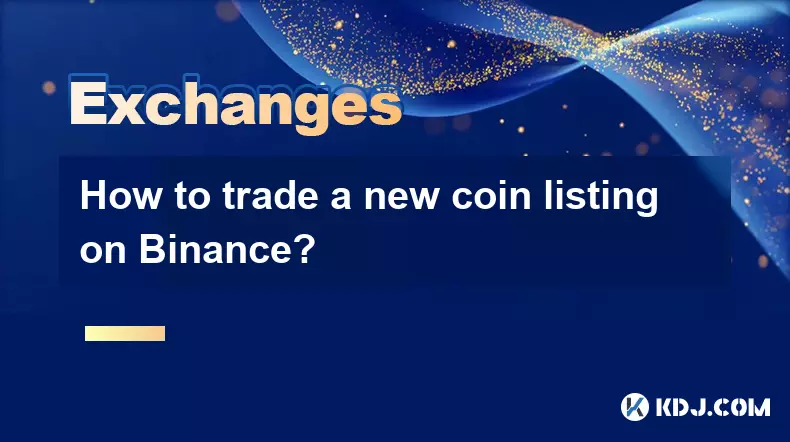
How to trade a new coin listing on Binance?
Aug 29,2025 at 11:14am
Understanding the Pre-Listing Phase1. Research the project thoroughly before any listing announcement. Whitepapers, team backgrounds, and community se...
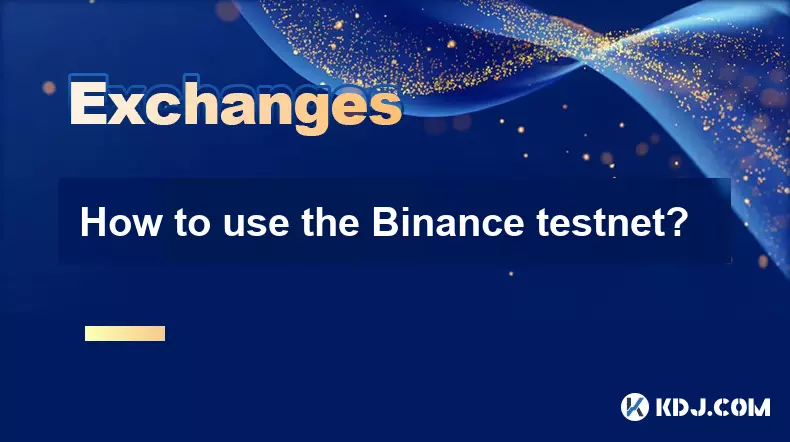
How to use the Binance testnet?
Aug 31,2025 at 02:19am
Understanding the Binance Testnet Environment1. The Binance testnet is a simulated version of the Binance Smart Chain (BSC) that allows developers and...
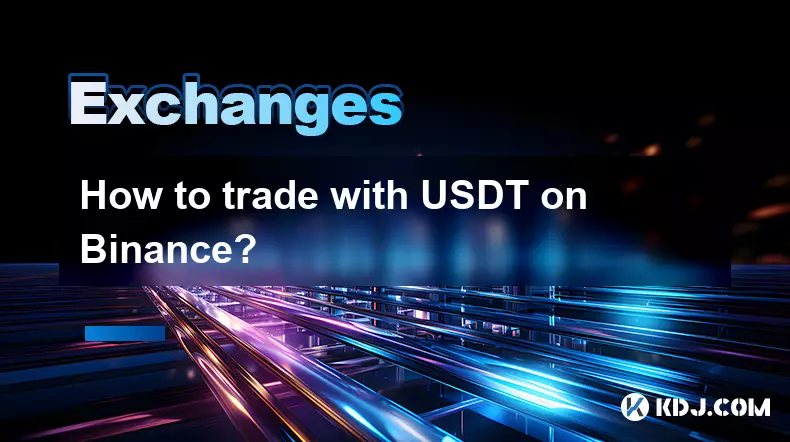
How to trade with USDT on Binance?
Aug 30,2025 at 02:19am
Getting Started with USDT Trading on Binance1. Create and verify your Binance account. Visit the official Binance website and complete the registratio...
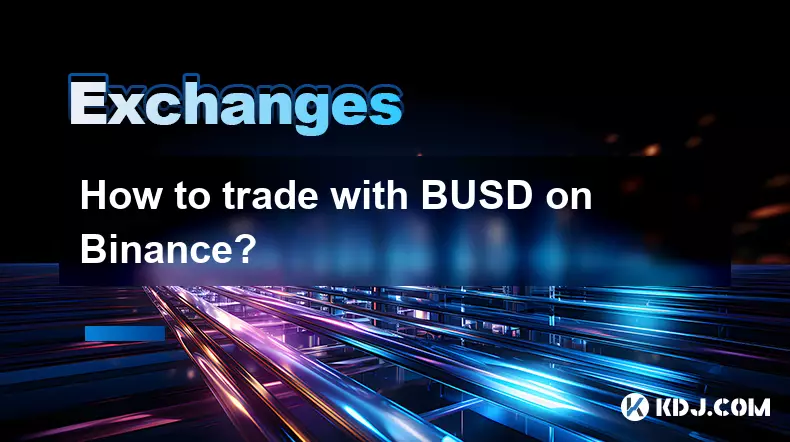
How to trade with BUSD on Binance?
Aug 30,2025 at 07:42am
Understanding BUSD and Its Role in Binance Trading1. BUSD, or Binance USD, is a stablecoin pegged to the value of the U.S. dollar, meaning 1 BUSD is a...
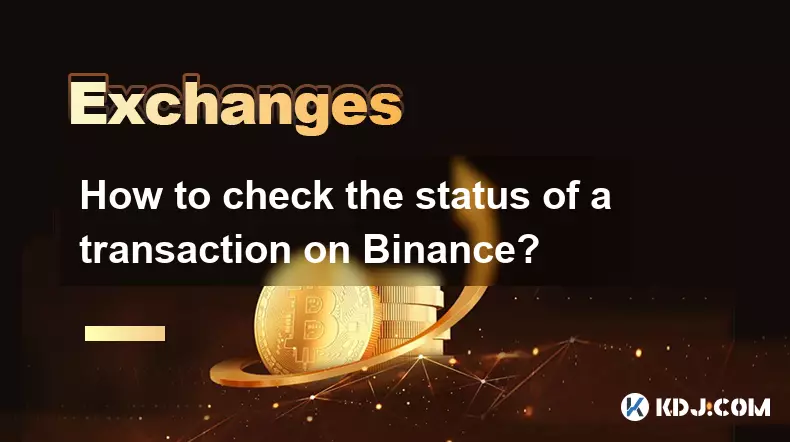
How to check the status of a transaction on Binance?
Sep 01,2025 at 01:18am
Understanding Transaction Status on Binance1. Log in to your Binance account through the official website or mobile application. Navigate to the 'Wall...

How to create a sub-account on Binance?
Sep 01,2025 at 12:36am
Accessing the Binance Sub-Account Feature1. Log in to your Binance account using your registered email and password. Ensure that two-factor authentica...

How to trade a new coin listing on Binance?
Aug 29,2025 at 11:14am
Understanding the Pre-Listing Phase1. Research the project thoroughly before any listing announcement. Whitepapers, team backgrounds, and community se...

How to use the Binance testnet?
Aug 31,2025 at 02:19am
Understanding the Binance Testnet Environment1. The Binance testnet is a simulated version of the Binance Smart Chain (BSC) that allows developers and...

How to trade with USDT on Binance?
Aug 30,2025 at 02:19am
Getting Started with USDT Trading on Binance1. Create and verify your Binance account. Visit the official Binance website and complete the registratio...

How to trade with BUSD on Binance?
Aug 30,2025 at 07:42am
Understanding BUSD and Its Role in Binance Trading1. BUSD, or Binance USD, is a stablecoin pegged to the value of the U.S. dollar, meaning 1 BUSD is a...

How to check the status of a transaction on Binance?
Sep 01,2025 at 01:18am
Understanding Transaction Status on Binance1. Log in to your Binance account through the official website or mobile application. Navigate to the 'Wall...
See all articles

























